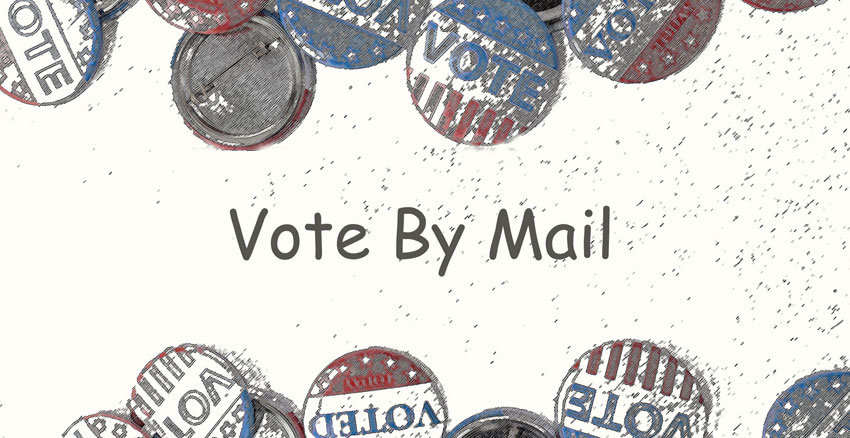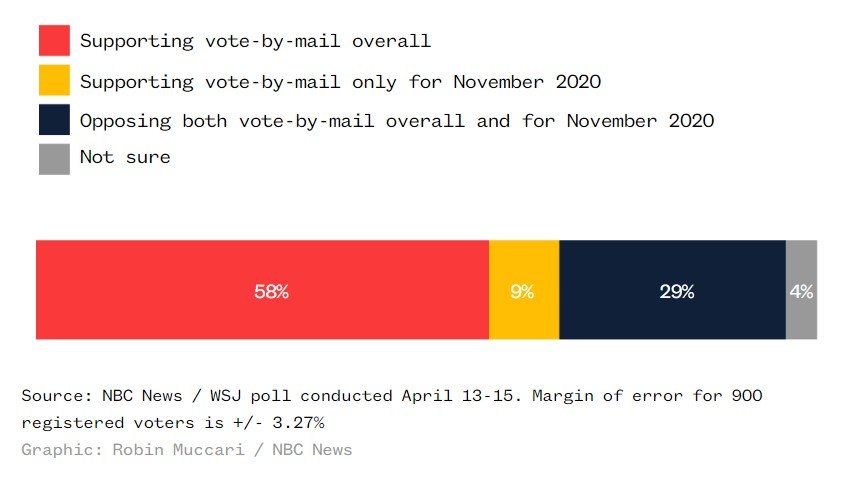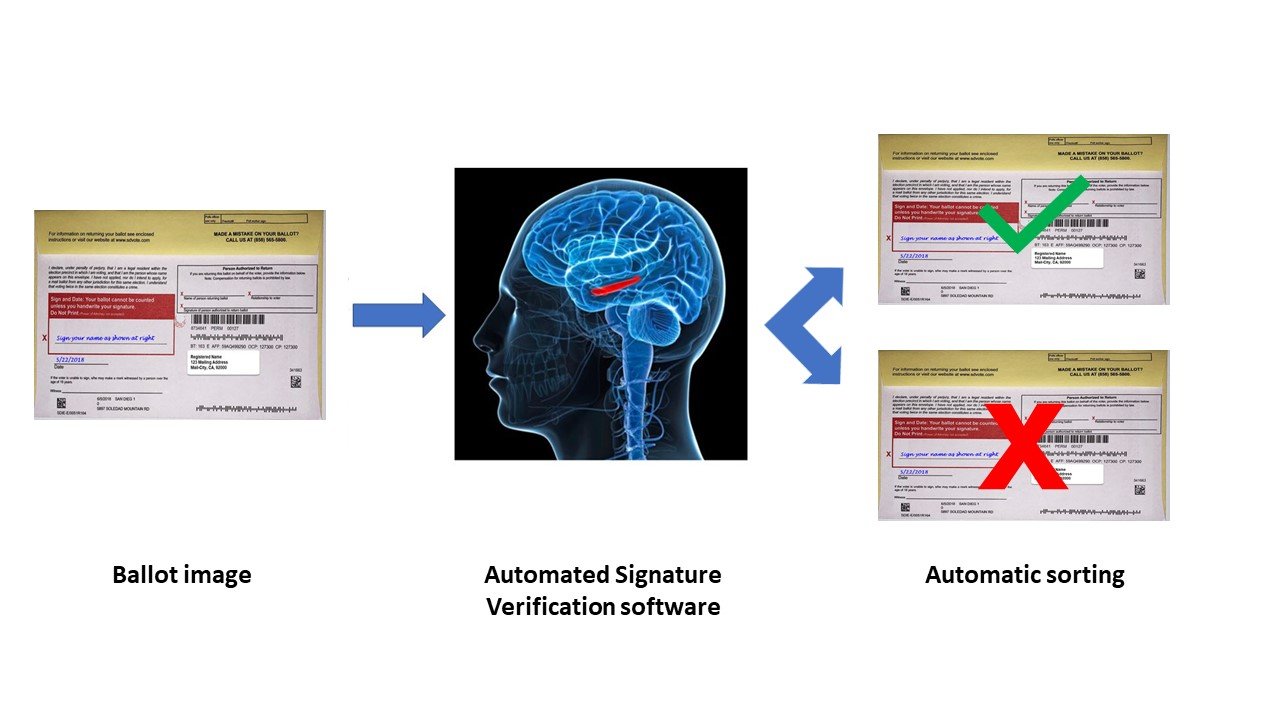
The people have spoken: they want to vote by mail this year. More than two-thirds of registered voters now want to see election laws changed to allow them to cast their ballots by mail in November because of concerns about the coronavirus outbreak.
The people have spoken: they want to vote by mail this year. More than two-thirds of registered voters now want to see election laws changed to allow them to cast their ballots by mail in November because of concerns about the coronavirus outbreak, according to an NBC News/Wall Street Journal poll conducted in April.1
But is vote by mail safe from the rampant fraud that some fear? Election experts assure us that it is, where the process is conducted with the proper controls. Richard Hasen, a professor at the University of California at Irvine School of Law and author of Election Meltdown: Dirty Tricks, Distrust, and the Threat to American Democracy, wrote that “problems are extremely rare in the five states that rely primarily on vote-by-mail, including the heavily Republican state of Utah.”2

The Colorado Example
Experts say a proven way to fight vote by mail fraud is to require the voter to sign the back of the ballot envelope, then compare the signature to the one on record with the state. In the state of Colorado where vote by mail elections have been conducted for years, there is a non-partisan process to validate the signatures. Election judges from both major parties work side-by-side to compare signatures on the ballot envelope to those stored in the state database. In some counties, computers do a first pass at this. Non-matched ballots are set aside, and the voters are given eight days to “cure” their rejected ballots or face an investigation.3
How safe is the Colorado process? Since 2010, out of the millions of ballots mailed in, there have been only two cases of vote by mail fraud reported. In 2010, a registered Republican voted by mail in Colorado and then in person in Arizona. Her double voting was detected by the Interstate Voter Registration Crosscheck Program. “When we find the rare instance of voter fraud, we vigorously prosecute the offenders to the fullest extent of the law,” said Arizona Secretary of State Ken Bennett.4,5 In 2016, a voter used her deceased father’s name to vote twice by absentee ballot in the Republican primary.5
Making Your Election Safe
To insure a safe and reliable vote by mail election, every election system must implement a signature verification process. Special volunteer judges such as those used in Colorado are trained and capable of visually comparing each ballot signature against the image stored in the state’s system of record. However, this process is very slow and prone to human fatigue and error, and the problems increase along with the number of ballots.
“Manual comparison of signatures can cause problems because of the time and resources required,” explains process automation expert Greg Council of Parascript. “More importantly, it also requires staff, who are not necessarily signature experts, to reliably and impartially compare signatures.”6
To solve this, election officials are turning to Automated Signature Verification (ASV) software to speed up the process while decreasing the error rate. First, mail-in ballots are scanned into a computer using fast and inexpensive off-the-shelf scanners. Next the software reads the scanned image and compares the signature in the database, at incredible speed. This offers a scientific and precise way to ensure matching signatures.
Who Is Reading Your Ballot?
It is imperative for election officials to seek out the best possible signature validation technology. If the ballot review process were a human body, ASV would be the eyes and the brain. Eyes to read the signature, and a brain to compare it to the system of record. Here is a diagram that explains the process.

5 ASV Capabilities Necessary for Election Automation Success
Now is a good time to review the brains and eyesight of your system and ensure you have the best of both. As a document automation expert with experience at providing solutions for election automation, here are the capabilities I look for when evaluating ASV tools.
- Uses AI to detect characteristics of a signature that are indistinguishable to the human eye to achieve the optimal fraud detection accuracy rates.
- Uses multiple verifiers to evaluate dozens of signature characteristics in order to differentiate between natural irregularities and true variances that are fraud indicators.
- Analyzes typical signature features such as comparison of geometric shapes, fragments, and trajectories.
- Quickly identifies ballots with missing signatures.
- Does not require programming skills for implementation and to fine-tune the system.
There’s No Time To Lose
ASV is used today by several states to provide assurances that each vote is treated fairly and is thoroughly reviewed. States such as Oregon, Colorado, Washington, and Utah can share their success with ASV technology with the other states that need to move quickly to implement a scalable vote by mail process in time for the November election.
Now is the time to consult an expert who can evaluate your current system and recommend the right solution.
Footnotes:
1 https://www.nbcnews.com/politics/meet-the-press/two-thirds-voters-back-vote-mail-november-2020-n1187976
2 https://www.washingtonpost.com/opinions/2020/04/09/trump-is-wrong-about-dangers-absentee-ballots/
3 https://www.cpr.org/2018/10/25/colorado-is-a-pretty-darn-safe-place-to-cast-a-ballot-this-is-how-we-got-here/
4 https://eu.azcentral.com/story/news/arizona/politics/2014/05/06/bullhead-city-woman-prosecuted-double-voting/8788313/
5 https://www.heritage.org/voterfraud/search?state=CO
6 https://www.parascript.com/rush-to-vote-by-mail-requires-decisions-on-signature-verification/
If you found this article interesting, you may find the following strategic white paper useful, How Automated Signature Verification Supports Vote-by-Mail.




